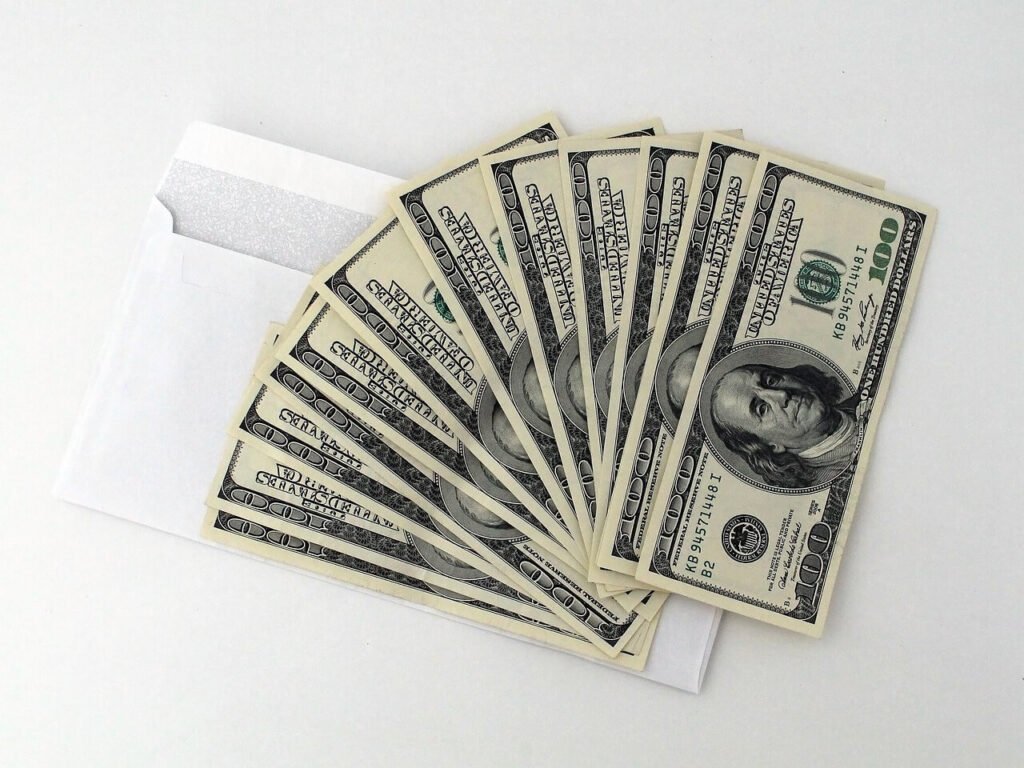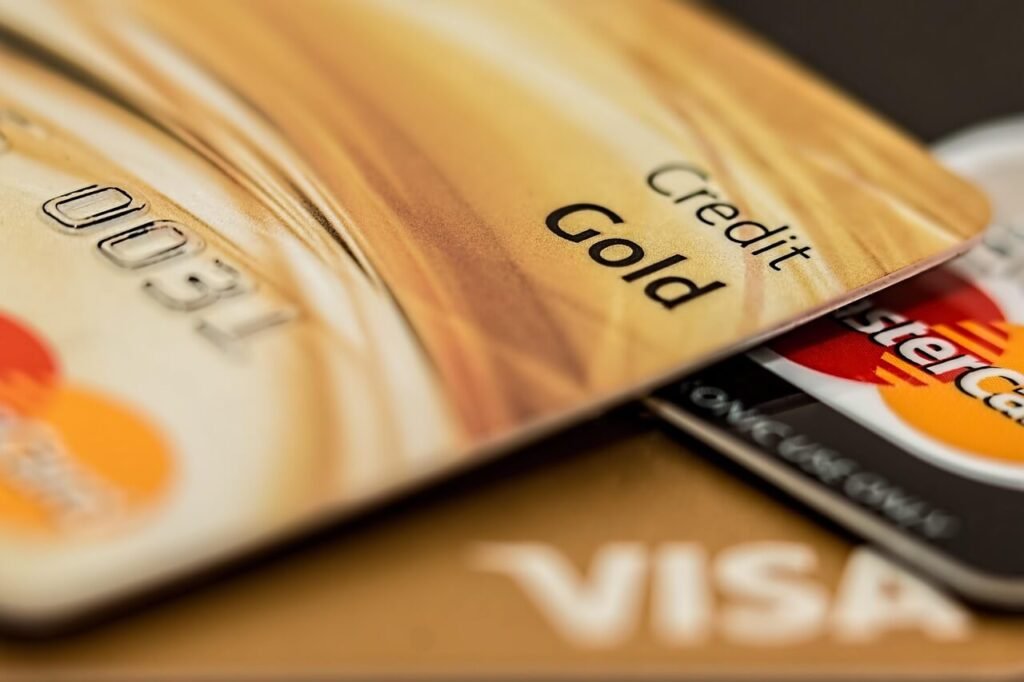Saving money is one of the most important steps to financial freedom—but it often feels like the hardest. Between rising rent, higher grocery prices, and unexpected expenses, it may seem like there’s nothing left to save at the end of the month.
But here’s the good news: saving money isn’t about big sacrifices, it’s about small, smart changes that add up over time. Even if you can only set aside $10 or $20 a week, those dollars begin to build a safety net. The key is to start today and be consistent.
This guide will walk you through 15 proven strategies to save money fast on a tight budget—practical steps anyone can take, no matter their income.
Why Saving Feels Impossible (And How to Fix It)
If you’ve ever said, “I just can’t save money right now,” you’re not alone. Saving often feels out of reach because of:
- Lifestyle Inflation – Extra income gets absorbed into new expenses.
- Fix: Save a set percentage of any raise or bonus.
- Living Paycheck to Paycheck – Every dollar is already spoken for.
- Fix: Start with just $5–$10 a week. Small amounts add up.
- Unexpected Expenses – Emergencies wipe out savings.
- Fix: Build a starter emergency fund of $500 first.
- Impulse Spending – Buying things in the moment drains progress.
- Fix: Apply the 24-hour rule before purchases.
By addressing these challenges directly, you can tackle them head-on. You’ll find saving becomes not only possible—but sustainable.
1. Track Every Dollar You Spend to Save Money Fast

If you don’t know where your money goes, saving will always feel out of reach. Most people underestimate spending on little things—coffee runs, takeout, streaming services—until it quietly eats up hundreds each month. By tracking every dollar, you’ll gain a clear picture of your spending habits and identify areas where you can cut back. Then, you can take control and redirect that money towards your goals.
How to get started:
- Use free budgeting apps like YNAB or EveryDollar to automate expense tracking.
- Prefer simple? A spreadsheet or notebook works fine.
- Review your spending weekly to spot patterns.
Example:
Realizing you spend $150/month on coffee means cutting back by half could save you $900/year—money that builds your emergency fund.
Action Step:
Commit to tracking every expense for the next 30 days. Even jotting purchases in your phone’s Notes app builds awareness and smarter choices.
✅ Pro Tip: Pair tracking with a savings goal. Seeing “$500 emergency fund” next to your expenses makes it harder to overspend.
2. Cut Unnecessary Subscriptions and Save Instantly

Subscriptions are sneaky budget killers because they often go unnoticed. A few dollars here and there for streaming, apps, or memberships can quietly add up to hundreds of dollars per year. The worst part is that most people aren’t even using half of what they’re paying for. By taking the time to review your recurring payments, you’ll likely find several services you can cancel or pause, instantly freeing up money to redirect into savings.
How to get started:
- Scan your bank statements for recurring charges.
- Cancel or pause subscriptions you rarely use.
- Rotate services like Netflix and Hulu instead of paying for multiple at once.
Example:
Canceling just two $12 streaming services saves $288 per year—with zero lifestyle change.
Action Step:
Pick one subscription to cancel today. You can always re-add later if you truly miss it.
✅ Pro Tip: Use a subscription manager app (like Truebill/Rocket Money) to identify forgotten recurring charges.
3. Cook at Home Instead of Eating Out

Eating out may feel convenient, but it’s one of the fastest ways to drain your wallet. Even a few restaurant meals per week can cost you hundreds of dollars a month. On the other hand, cooking at home not only saves you money but also gives you more control over portion sizes and ingredients. By cooking at home, you save money, eat healthier, and learn a skill that pays off forever.
How to get started:
- Meal prep 2–3 nights a week to avoid last-minute takeout.
- Batch cook simple, affordable meals like pasta, stir-fry, or soups.
- Shop grocery sales and plan meals around discounts.
Example:
Cooking at home just three nights a week instead of eating out could save $100–$200 per month.
Action Step:
Choose three recipes today and shop for them. Put one meal in your freezer to avoid takeout emergencies.
✅ Pro Tip: Make cooking fun by turning it into an activity—invite a friend, cook with your partner, or try new cultural recipes.
4. Apply the 24-Hour Rule to Stop Impulse Spending

Impulse buying often happens in the heat of the moment, driven by emotions or clever marketing. Unfortunately, these unplanned purchases are one of the biggest obstacles to saving money. The 24-hour rule is a simple but powerful way to break this habit. By forcing yourself to wait a full day before buying non-essential items, you’ll give yourself time to reflect on whether the purchase is truly necessary. More often than not, the urge will pass—and your money will stay in your pocket.
How to get started:
- Add non-essential items to a wish list instead of buying instantly.
- Revisit the item after 24 hours (or 72 hours for bigger purchases).
- Ask: “Will this still matter to me in a month?”
Example:
That $60 sweater you almost bought online may not feel worth it a day later—saving you money without sacrifice.
Action Step:
Pick one category (like clothes or gadgets) where you’ll apply the 24-hour rule for the next 30 days.
✅ Pro Tip: Leave items in your cart. Many retailers send discount codes when you don’t check out.
5. Automate Your Savings to Make It Effortless

One of the easiest ways to build savings consistently is to take willpower out of the equation entirely. Automation ensures that you’re saving regularly without having to think about it. By scheduling automatic transfers from your checking account to your savings account each week or month, you’ll prioritize saving just like paying a bill. Even small, automatic amounts add up over time and create a steady foundation for your financial goals.
How to get started:
- Set up automatic transfers on payday from checking → savings.
- Start small ($10–$20) and increase as you can.
- Open a separate savings account to reduce temptation.
- Use a high-yield savings account to get automatic interest payments.
Example:
Saving $20/week automatically equals over $1,000/year—without lifting a finger.
Action Step:
Log into your bank and set up an automatic transfer from checking to savings on payday. Start small, then bump it up as your budget allows.
✅ Pro Tip: Use “round-up” savings apps that stash spare change every time you spend.
6. Shop Smarter for Groceries Without Sacrificing Quality

Groceries are a necessity, but overspending on them is all too common. Without a plan, it’s easy to wander through the store, add extras to your cart, and walk out spending far more than you intended. Shopping smarter is about making intentional choices that stretch your budget further. A little strategy goes a long way.
How to get started:
- Always shop with a list—and stick to it.
- Buy store brands (often the same product as name brands).
- Use rebate apps like Rakuten or Ibotta to earn cash back.
Example:
Switching half your cart to store-brand items could save $20–$40 per trip.
Action Step:
Plan three meals before your next grocery trip and make a list around those ingredients. Stick to the list, no “browsing” allowed!
✅ Pro Tip: Never shop hungry. Stores are designed to tempt impulse buys.
7. Use Cash for Fun Spending to Stay in Control

Credit and debit cards make spending almost too easy. Because swiping a card doesn’t feel as tangible as handing over physical money, it’s easy to overspend without realizing it. Cash forces you to face the trade-offs—once it’s gone, it’s gone. Using cash for discretionary spending gives you built-in discipline.
How to get started:
- Withdraw a set amount for “fun money” each week.
- Try the cash envelope system for dining out, entertainment, etc.
- Leave your cards at home for non-essential outings.
Example:
Giving yourself $60 cash for weekly entertainment prevents those “oops” $200 weekends.
Action Step:
Withdraw your “fun money” in cash at the start of the week. Once it’s gone, you know it’s time to stop spending.
✅ Pro Tip: Keep small bills. Paying with $20s instead of $100s makes you less likely to splurge.
8. Lower Utility Bills With Simple Tweaks

Household bills may feel fixed, but in reality, there are many ways to cut down on utilities. Small changes in your daily habits can lead to noticeable savings month after month. By being more mindful of how you use electricity, water, and gas, you can free up extra money without sacrificing comfort.
How to get started:
- Lower your thermostat 2–3 degrees.
- Turn off lights when leaving rooms.
- Wash laundry in cold water.
- Unplug electronics when not in use.
Example:
Lowering your thermostat 2 degrees in winter could save $15–$25/month.
Action Step:
Pick one small change today—like lowering your thermostat or switching bulbs to LED. Track your next bill to see the difference.
✅ Pro Tip: Call your utility company—many offer free energy audits to help you save more.
9. Buy Secondhand First Before Paying Full Price

Why pay retail when secondhand is just as good? From furniture to clothing to electronics, secondhand shopping stretches your budget dramatically. Often, items are barely used but cost a fraction of the price. By embracing secondhand shopping, you not only save money but also reduce waste and practice sustainable living.
How to get started:
- Check Facebook Marketplace, Craigslist, or thrift stores.
- Look for community garage sales or estate sales.
- Ask friends/family if they have items they no longer need.
Example:
Buying a $20 thrift-store jacket instead of $100 retail saves $80 instantly.
Action Step:
Before buying anything new, take 10 minutes to check secondhand options. You’ll often find the same item for half the price.
✅ Pro Tip: Search resale sites mid-week—sellers are more willing to negotiate then.
10. Avoid Debt and Break Free From Interest Payments

Debt is one of the biggest obstacles to building savings because it drains your income through high-interest payments. Every dollar toward interest is a dollar not saved. By avoiding debt—or working aggressively to pay it down—you free up more of your income to put toward savings. The less money you owe to creditors, the more financial freedom you’ll have to focus on your own goals.
How to get started:
- Pay credit card balances in full each month.
- Use cash/debit instead of relying on credit.
- Don’t finance unnecessary purchases.
- Refinance high-interest loans if possible.
Example:
Paying off a $1,000 balance at 20% interest saves $200/year in wasted payments.
Action Step:
Choose your highest-interest debt and commit to paying a little extra each month. Even $25 can speed up your freedom.
✅ Pro Tip: Treat debt payoff like a guaranteed investment—because eliminating 20% interest is like earning a 20% return.
11. Negotiate Bills to Put Money Back in Your Pocket

Many bills are negotiable—you just have to ask. Companies would rather give you a discount than lose you. Internet, cable, phone, and insurance companies all want to keep your business, and sometimes a simple phone call is all it takes to lower your rate. Negotiating bills may feel intimidating, but it’s one of the fastest ways to save money without changing your lifestyle.
How to get started:
- Call your internet or phone provider and ask about promotions.
- Shop around for cheaper insurance rates.
- Use competitor quotes to negotiate.
Example:
Lowering your internet bill by $20/month = $240/year in savings.
Action Step:
Call one provider this week—like your internet or phone company—and ask for a discount. Transfer whatever you save straight into savings.
Script idea: “I’ve been a loyal customer, but my bill is higher than competitors. Can you lower it or offer a promotion?”
✅ Pro Tip: If the rep won’t budge, ask for the “retention department.” They usually have more authority to offer discounts.
12. Sell Items You Don’t Use and Boost Savings Fast

We all have clutter—clothes we don’t wear, electronics we don’t use, or furniture that just takes up space. Instead of letting those items collect dust, why not turn them into cash? Selling unwanted belongings not only helps you declutter your home but also gives your savings a quick boost. Online platforms and local marketplaces make it easier than ever to find buyers for the things you no longer need. Your home is full of hidden money!
How to get started:
- Sell clothing on Poshmark or ThredUp.
- Post electronics or furniture on Facebook Marketplace.
- Use eBay for collectibles or gadgets.
Example:
Selling an unused $200 treadmill covers half a month’s rent or bills.
Action Step:
Pick three items you don’t use, take photos, and list them online today. Deposit the cash into savings once they sell.
✅ Pro Tip: Price slightly lower than competitors to sell faster.
13. Choose Free (or Cheap) Entertainment That’s Just as Fun

Entertainment is an important part of life, but it doesn’t have to cost a fortune. Too often, we equate fun with spending—going out to dinner, seeing movies, or paying for events. But there are countless free or low-cost ways to enjoy yourself. By getting creative and exploring alternatives, you can still have a fulfilling social life while saving money at the same time.
How to get started:
- Explore free local events, museums, or hiking trails.
- Borrow books and movies from the library.
- Host potluck dinners or movie/game nights.
- Pick up low-cost hobbies, such as writing, drawing, or bird-watching.
Example:
Replacing one $50 night out with a free park day saves $200/month.
Action Step:
Look up two free local activities and put them on your calendar. Treat them like real plans so you don’t default to expensive outings.
✅ Pro Tip: Treat free outings like real events—put them on your calendar so you don’t default to spending money.
14. Set Clear Savings Goals to Stay Motivated

Saving money without a clear purpose can feel aimless and unmotivating. That’s why setting specific goals is so important. When you know exactly what you’re saving for—whether it’s an emergency fund, a vacation, or a down payment— it’s easier to stay focused and motivated. Goals turn saving from a chore into a mission.
How to get started:
- Decide what you’re saving for (emergency fund, vacation, debt).
- Break it into smaller milestones.
- Track progress visually with a chart or app.
Example:
Saving $500 in 10 weeks is just $50/week—much less overwhelming than staring at the full number.
Action Step:
Write down one savings goal and break it into smaller targets. Track progress visually so every dollar feels like a win.
✅ Pro Tip: Print a visual tracker (like a savings thermometer) and color it in as you go—it makes progress fun.
15. Pay Yourself First to Guarantee Savings

Most people save whatever money is left at the end of the month—but often, there’s nothing left. The “pay yourself first” rule flips this approach by making saving a priority. By setting aside money immediately after you’re paid, you guarantee that savings come before discretionary spending. This simple mindset shift ensures that you consistently build your savings, no matter how tight your budget may feel.
How to get started:
- Automate a transfer into savings the moment your paycheck hits.
- Treat it like a bill you can’t skip.
- Start with a small percentage (5–10%) and increase gradually.
Example:
Automatically saving 10% of each paycheck means you’ll build wealth consistently without thinking about it.
Action Step:
Schedule a recurring transfer to savings the same day your paycheck hits.
✅ Pro Tip: Schedule the transfer for payday morning, before you even see the money. Out of sight, out of mind.
Key Takeaways
- Start small. Even $5–$10 a week builds momentum.
- Automate savings. Save before you spend.
- Cut waste. Cancel unused services and avoid impulse buys.
- Be intentional. Track every dollar and set clear goals.
- Stay consistent. Savings grow faster than you think when you stick to it.
FAQs About Saving Money on a Tight Budget
1. How can I save money if I live paycheck to paycheck?
Start small. Even $5–$10 per week matters. Focus first on building a $500 emergency fund to cover unexpected costs.
2. Is it better to pay off debt or save money first?
Ideally, do both. Start with a small emergency fund, then tackle high-interest debt aggressively. Debt costs more in the long run than the interest you’ll earn on savings.
3. How much should I save each month?
A good starting point is 10% of your income, but if that feels impossible, just start with what you can. Consistency matters more than the amount.
4. What is the fastest way to build savings?
Cut big expenses (housing, transportation, food) first. Then, sell unused items, negotiate bills, and automate savings.
5. How can I stay motivated to save?
Set clear goals, track your progress visually, and reward yourself (in small, budget-friendly ways) when you hit milestones.
Final Thoughts: Your Future Self Will Thank You
Saving money fast on a tight budget isn’t about deprivation—it’s about taking control. Every dollar saved is a step closer to financial security and peace of mind.
Imagine the relief of having $500 ready when an emergency strikes, the freedom of saying “yes” to opportunities without worrying about money, and the confidence of knowing you’re building a future where money no longer controls you.
It all starts with one step. Pick just one or two tips from this list today. Apply them consistently. Soon, you’ll look back and realize you’ve built real momentum.
Remember: It’s not about how much you save—it’s about starting now. The best time to begin was yesterday. The second-best time is today. Start small, stay consistent, and watch your savings grow.



